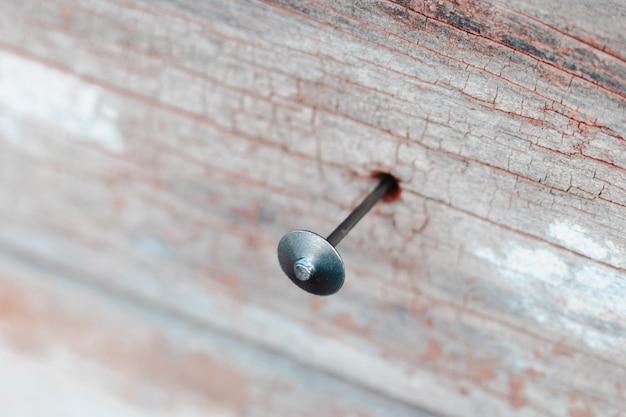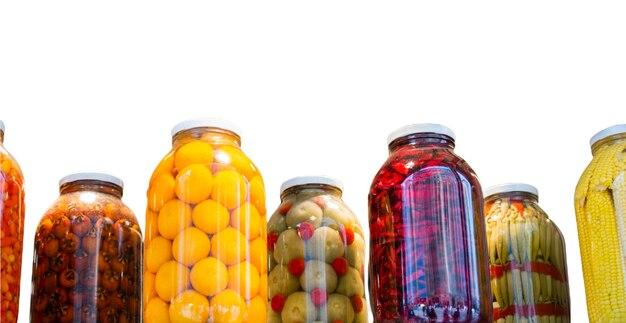As we delve into the world of woodworking and furniture finishes, two popular techniques often come up: whitewashing and pickling. In this blog post, we’ll dive into what sets these techniques apart and how you can achieve stunning results with each.
Whitewashing, a classic technique that has been used for centuries, involves applying a thin, translucent layer of white paint or stain to the surface of wood. It’s a great way to add a touch of rustic charm and create a light, airy feel in your space. On the other hand, pickling is a method that involves using a diluted white or light-colored paint to create a subtly washed-out look. It brings out the grain and texture of the wood while lightening its color.
If you’ve ever wondered whether whitewashing is outdated, how to apply a whitewashed finish, or how to pickle paint to achieve a specific look, we’ve got you covered. We’ll also explore whether you can whitewash over varnished wood, what kind of paint is best for whitewashing, and if you can experiment with different colors. So, grab your tools and join us as we discover the beauty and versatility of these timeless wood finishing techniques!

What’s the Deal with Whitewashing and Pickling
Whitewashing and pickling are two popular methods of wood finishing that can add a touch of elegance and personality to your furniture or home decor. While they may seem similar at first glance, they differ in both the process and the outcome. So, if you’re wondering what sets these two techniques apart, keep reading!
Whitewashing: The Vintage Vibes
Whitewashing is like stepping into a time machine and indulging in those charming vintage vibes. This technique involves applying a thin, translucent white paint or stain to wood, allowing the grain to show through. The result? A beautiful, weathered look that adds character and a touch of rustic simplicity to any piece.
So, say you have a vintage dresser that’s seen better days. Whitewashing can be a fantastic way to revive it, giving it that shabby-chic appearance that’s all the rage. It’s also ideal for achieving that beachy, coastal feel or creating a cozy cottage aesthetic.
Pickling: A Subtle Twist
While whitewashing embraces a more opaque look, pickling takes a subtly different approach. This technique involves applying a diluted white stain to wood, which seeps into the grain and highlights its natural texture. The result is a soft, pale finish that enhances the wood’s grain pattern, rather than covering it up completely.
Think of pickling as the cool, refined cousin of whitewashing. It adds a touch of sophistication and elegance to your furniture without overpowering its natural beauty. It’s perfect for those who want a more understated, modern look that still pays homage to tradition.
The Application: Brush or Rag
Now that we’ve explored the unique essence of each technique, let’s dive into the application process.
For whitewashing, you generally use a brush or a rag to apply the white paint or stain in long, even strokes. This enables the paint to penetrate the wood and create a more substantial, opaque finish. Don’t be afraid to experiment with different brush strokes or techniques to achieve your desired look – after all, this is the time to unleash your inner artist!
On the other hand, pickling usually requires a rag or sponge. You’ll want to dip your rag into the diluted white stain and apply it to the wood in a circular motion, allowing the stain to seep into the grain and create that beautiful, subtle effect. It’s all about working in harmony with the wood’s natural patterns to achieve an enchanting finish.
Making the Final Call
So, when it comes down to it, deciding between whitewashing and pickling boils down to personal preference and the look you’re aiming to achieve. Do you crave a vintage, weathered appearance? Then whitewashing might just be your best bet. But if you’re after a more refined, subtly textured surface, pickling is the way to go.
Regardless of which technique you choose, both whitewashing and pickling offer a fantastic opportunity to transform your wooden furniture or decor into something truly remarkable. So grab your brush or rag, roll up your sleeves, and let your creativity run wild – because with whitewashing and pickling, the possibilities are endless!
Hey, who knew wood finishing could be so fun? It’s like playing dress-up for your furniture! Now, go forth and let your artistic side shine through the wonders of whitewashing and pickling. Your home decor will thank you – and so will your inner designer!

FAQ: What is the Difference Between Whitewashing and Pickling
Is Whitewash Outdated
No, whitewashing is not outdated. In fact, it has been a popular technique for centuries. While other finishes may come and go, whitewashing continues to be a timeless choice for achieving a light and airy look in interior design.
How Do You Make Pine Wood Look Like White Oak
To make pine wood resemble white oak, you can use a technique called pickling. This involves applying a pickling stain or a mixture of white paint and water to the wood. The result is a beautiful, whitened effect that mimics the appearance of white oak.
What is a Whitewashed Finish
A whitewashed finish is a technique where a thin layer of white pigment is applied to wood, allowing the grain to show through. It creates a lovely, weathered look reminiscent of coastal cottages or farmhouse-style interiors.
How Do You Pickle Paint
To pickle paint, you’ll need to create a pickling solution by diluting white paint with water or another clear liquid. Then, apply the solution to the wood using a brush or rag. The paint will settle into the wood grain, creating a translucent, whitened effect.
Can You Whitewash Over Varnished Wood
Yes, you can whitewash over varnished wood. However, it’s essential to remove any existing finish or varnish before applying the whitewash. This can be done by sanding or using a chemical stripper. Once the wood is bare, you can proceed with the whitewashing process.
What Kind of Paint Do You Use to Whitewash Wood
For whitewashing wood, you can use various types of paint, such as latex or water-based paints. It’s best to choose one with a lighter shade, such as white or off-white, to achieve the desired effect.
Can You Whitewash with Other Colors
While traditional whitewashing involves using white paint, you can certainly experiment with different colors to create unique effects. With a little creativity, you can achieve a range of stunning finishes, from pale pastels to bold and vibrant hues.
How Do You Make Whitewash
Making whitewash is relatively simple. You just need to mix equal parts of white paint and water. If you prefer a more translucent look, you can add more water. Remember to stir the mixture well to achieve a smooth consistency before applying it to the wood.
WHITE WAX vs WHITE WASH vs PICKLED 3 Ways to Get a Lighter Wood Finish!
When it comes to achieving a lighter wood finish, you have a few options. White wax provides a protective layer with a subtle sheen while enhancing the natural wood grain. Whitewash, on the other hand, creates a more opaque look by applying a diluted coat of white paint. Lastly, pickling involves using a pickling solution or stain to create a whitened effect. Each technique offers its own charm, so it’s up to your personal preference!
Do I Need to Seal Wood After Whitewashing
Yes, it is recommended to seal the wood after whitewashing to ensure longevity and protection. Applying a clear coat or sealer will help preserve the whitewashed finish, prevent fading, and make the wood easier to clean and maintain.
How Do I Pickle Furniture
To pickle furniture, start by sanding the surface to remove any existing finish. Next, apply a pickling stain or a mixture of white paint and water, following the wood grain. Allow it to dry, and if desired, lightly sand the surface for a more distressed look. Finally, seal the furniture with a clear coat or wax to protect the pickled finish.
How Long Will Whitewash Last
The lifespan of a whitewashed finish depends on various factors, such as the type of wood, the thickness of the whitewash, and the level of wear and tear. Under normal conditions, a well-sealed whitewashed surface can last for several years. However, it’s always a good idea to periodically inspect the finish and perform touch-ups as needed.
What Does Pickling Do to Stainless Steel
When it comes to stainless steel, pickling is a process typically used for cleaning and maintaining the material’s surface. It involves the removal of impurities and contaminants through the application of an acid-based solution. Pickling helps restore the stainless steel’s corrosion resistance and enhances its appearance.
What is Pickling Wood Finish
Pickling wood finish is a technique that lightens the color of wood while still allowing the grain to show through. It involves using a pickling stain or a white paint and water mixture to create a subtle, whitened effect on the wood surface. The resulting finish adds character and a touch of vintage charm to any woodwork.
How Do You Pickle Wood with Vinegar
To pickle wood with vinegar, you’ll need to create a vinegar solution by diluting white vinegar with water. Then, apply the solution to the wood using a brush or rag, making sure to follow the direction of the wood grain. Allow it to dry, and if desired, lightly sand the surface. Finally, seal the wood with a clear coat or wax for added protection.
What Does Whitewash Pickling Do
Whitewash pickling combines the techniques of both whitewashing and pickling to achieve a distinctive finish. It lightens the wood while allowing the natural grain patterns to shine through. The result is a beautiful blend of a whitewashed look with subtle undertones, providing a unique character to the wood.
Do You Have to Sand Before Whitewashing
Yes, it is recommended to sand the wood before whitewashing, especially if the surface has an existing finish or imperfections. Sanding helps create a smooth and even base, ensuring better adherence of the whitewash and a more polished final result.
What Does Pickling Mean with Paint
In the context of paint, pickling refers to a technique where the paint is diluted with water or another clear liquid to create a translucent or semi-transparent effect. It allows the underlying surface, such as wood grain or texture, to remain visible while adding a layer of whitened or lightened color to achieve a desired aesthetic.
Enjoy the process of whitewashing and pickling as you transform your woodwork into stunning pieces that exude charm and elegance. May your creativity flow as you experiment with colors and techniques to achieve the perfect finish that suits your style!